The best touring bikes for sale in Australia in 2023
/So you want to go on a bike tour, but what kind of bike do you need? Touring bikes are specifically designed to carry lots of luggage and be ridden long distances over varied terrain. They are strong, reliable, stable and comfortable, which will make your life a lot easier on the road. This also makes them a popular choice for an 'everyday' commuter bike.
Here I've outlined a handful of the best touring bikes available on the Australian market. They are all a bit different, with unique pros and cons, but they will all serve you well on anything from a trip to the supermarket to a cross-continental journey.
But there are so many ‘adventure’ bikes out there, what exactly defines a touring bike? There are many ways you could try and categorise bikes by the type of components they have or other particular design features, but I’m going to keep things simple. Here I’m defining a touring bike as anything that’s designed around the idea of carrying a significant amount of weight in four panniers.
If that doesn’t sound like what you want to do, and you’re more interested in lightweight bikepacking style adventures, you could check out my sister post on the best gravel bikes available in Australia.
A quick note on pricing: the pricing stated is the RRP, to the extent I can find one. However there is a lot of discounting going on at the moment, so take those prices with a grain of salt.
MASI Giramondo $2500
The Masi Giramondo is the only touring bike left on the market with old school, bar end shifters, and for that I reckon it deserves top spot on this list. Other than that it’s a great looking, good value touring bike that’s ready for some big adventures.
Why don’t we start by talking about that drivetrain. A triple chainring drivetrain with bar end shifters used to be the standard for touring bikes. That’s because it provides a very wide range of gears, doesn’t have to be expensive and is very reliable. The shifters in particular are a much cheaper and simpler part than the dual control levers found on most of the other bikes on this list. The right hand one also gives you the option of using it in ‘friction’ mode (it doesn’t ‘click’ into gear but you find the gear manually) which can be handy if you’re experiencing gear indexing issues, because, say you’ve crashed and bent the derailleur. The only downside is that they are less convenient to use, as you have to move your hand away from the handlebar to operate them.
The shifters and both derailleurs are from Microshift, a slightly more budget component manufacturer than, say, Shimano or SRAM. Don’t let this put you off though. Using Microshift usually feels a little less ‘refined’ than Shimano, but I’ve test ridden this particular bike, and it shifts very well. I wouldn’t have any problem taking this on a tour. Plus, going on a ‘tour’ is about taking your time, enjoying yourself, and the personal growth that comes from dealing with the imperfect situations you will inevitably encounter on the road. You’re not racing. You’re not making up milliseconds with lightning fast, razor sharp gear shifting. Just relax. This drivetrain will be perfectly reliable. If anything, it may be easier to source Microshift spare parts compared to Shimano these days, and Shimano derailleurs would be compatible with this bike anyway.
The Masi Giramondo has a nice big burly feeling frame, geometry that’s ready for heavily loaded riding, and tyre clearance up to 2 inches for a 700c (or 29 inch) wheel. A nice inclusion is the three pack mounts on the fork, which, along with the tyre clearance, give you the option of using this as more of an off-road bikepacking rig should the fancy take you.
The TRP Spyre brakes are a good quality mechanical disc system, which again maximises reliability and on-road serviceability, and provide adequate power for most situations, though they can be underpowered if you’re going downhill fast on a heavy bike. For any touring bike with mechanical disc brakes I would recommend an upgrade to Yokozuna compressionless brake housing and possibly some metallic brake pads (make sure your rotors don’t say “organic pads only.”)
A quick not on wheels. Many bikes come standard with ‘average’ quality wheels. This is because building a proper heavy duty wheel is reasonably pricey. Brands try to target a particular price point when they design a bike, and often they will stock a wheelset that is ‘good enough’ for most end users. With all of the bikes on this list, with the exception of Vivente and the Surly (see below), I would consider upgrading at least the back wheel if you are planning to load the bike with 120kg or more including the rider. A bike shop that specialises in adventure cycling should be able to talk you through some options.
Drivetrain: Microshift 3x10, bar end shifters
Tubeless? No
Tyre clearance: 29.X 2.0
Brakes: TRP Spyre mechanical disc
Axles: 100/135 QR
VIVENTE Gibb / VIVENTE Swabia $6600
Vivente are an Australian brand owned and operated by Noel Mcfarlane, a veteran bicycle tourist. Noel takes a lot of time thinking through the design of Vivente bikes, and aims to produce a bike that is ready to go on the most demanding tours, straight from the showroom floor.
In 2023, Vivente began building their bikes in Tasmania, using the same Taiwanese made frames they’ve always used, which has allowed Noel greater scrutiny of the build process. They have also ditched their derailleur models, and are now producing two Rohloff models only, the Gibb and the Swabia, which come with trekking handlebars and drop handlebars respectively.
The belt driven, Rohloff drivetrain goes a long way to contributing to the price of these bikes, but you do end up with the lowest maintenance, most durable touring drivetrain around. There is no chain to be lubricated, and no derailleur to get bent or damaged, just a wide range of gears and an oil change every 5000km or calendar year, whichever comes first. The other thing that contributes to the price is all the additions that, with many other bikes, you have to buy separately.
The Vivente Gibb and Vivente Swabia come with a Tubus rear rack, mudguards, kickstand, dynamo lighting, two bottle cages and bottles, a quality brass bell, a rear view mirror and some spare spokes zip tied to the frame. In the ‘owners box’ there is even more, including a host of tools and spares, and even a handlebar mounted bugle horn, just in case you want to do your bike touring dressed as a clown.
Other notable inclusions are reliable Shimano hydraulic brakes, Sapim spokes, and a rear wheel built in house at their Tasmanian facility. When you order from Vivente (either directly or through a retailer), you can also choose from a number of options including wheel size (700c or 650b), handlebar, front rack and Brooks saddle. A Vivente bike really leaves you wanting for nothing.
The only notable downgrade are the rims, which are now supplied by the more budget brand Jalco, as opposed to the DT Swiss rims supplied with the previous version. There is nothing to indicate that these would be unreliable, just a bit heavier than the previously supplied DT Swiss rims. Also, they appear not to be tubeless compatible.
All these features, along with the Viventes long chainstays, make these bikes a great choice for heavily loaded riding on roads of all surfaces. They are heavy beasts though, and it’s a lot of bike to be pushing around on the daily commute. The lack of three pack mounts on the forks also make this bike less adept as an off-road bikepacking bike.
Drivetrain: Rohloff 14 speed internal gear hub
Tubeless? No
Tyre clearance: 29 X 2.1
Brakes: Shimano hydraulic
Axles: Front 12 X 100 TA / Rear 135mm QR
This is a reader supported publication. If you found this information helpful, you can support this website by becoming a patron and making a small monthly donation. You’ll get a name credit on the site (see bottom of page), as well as other rewards. You’ll also be supporting adventure cycling in Victoria, and helping more people get out on their bikes.
KONA Sutra $3499
Kona’s traditional touring bike, the Sutra SE, is not being imported to Australia in 2023. But we do have the plain old Kona Sutra, which is a sort of touring/gravel crossover. I like Kona. They innovate. Their bikes are engaging to ride, good quality, finished well, reliable and look good. In recent years they have grown to become one of the respected players in the adventure bike market.
The Kona Sutra is one of the lighter and nimbler bikes on this list. It has short chainstays, reasonably light wheels and gravel gear ratios. This all means that it’s a little less suited to heavily loaded, expedition style touring than some of the other bikes on this list. It may be a little less stable, and you don’t have the really small gears you find on most touring bikes, but it will handle a moderate touring load with four panniers just fine, and the benefit is that it’s more enjoyable to ride for all those times you’re not touring, such as commuting and gravel riding. And with good tyre clearance (up to around 2.1 inches on a 700c/29inch wheel), as well as a huge variety of bottle/luggage mounts, this is a great bike for bikepacking.
The brakes are a hybrid cable/hydraulic system, which typically provides more power than a cable system but with less expense and more options for replacement shifters than a hydraulic system. The shifting on this bike will be a step above most others, with Shimano Tiagra levers matched to Shimano GRX 400 derailleurs. A prowheel crankset has been fitted either to keep the price down or because of availability, but it works just fine.
There are a few notable premium inclusions, such as Brooks saddle and bar tape, some very durable tyres (Schwalbe Marathon Mondial), a Tubus Tara lowrider front rack and some decent looking mudguards. The Kona Sutra is a great handling bike that’s fun to ride, with balanced capabilities.
Drivetrain: Shimano Tiagra/GRX 400 2x10
Tubeless? Rims only
Tyre clearance: 29 X 2.1
Brakes: TRP HDC711C Mechanical / Hydraulic
Axles: Front 12 X 100 TA / Rear 12x142 TA
TREK 520 $2199
The Trek 520 is an old school, fully-equipped, great-looking and reliable touring bike at an excellent price. Manufactured continually since 1983, the Trek 520 is the longest running model in this list, and the longest running model in Trek’s line up, so they must be doing something right with this bike. Trek is also one of the largest and most recognised bike brands in the world, and it can be comforting to know that the resources of a large brand are behind it.
When I say old school it’s in the best possible way, meaning that they’ve retained the heart and spirit of a traditional touring bike while adopting newer technologies and design features where it makes sense. There are good quality disc brakes (TRP Spyres), for example, and tubeless ready wheels. There’s clearance for 29x2 inch tyres, and three pack mounts in the main triangle and on the fork legs, which make it suitable for off road bikepacking too. With front and rear racks included, you only need to throw some bottle cages onto the Trek 520 and it’s ready to go. There aren’t any cheap, off-brand parts on it either, which makes the $2199 price tag very reasonable.
The Trek 520 is a great entry into the touring bike market, as well as a long-term steed for an experienced touring cyclist.
Drivetrain: Shimano Sora 3x9
Tubeless? Rims
Tyre clearance: 29.2.0
Brakes: TRP Spyre mechanical disc
Axles: 100/135mm QR
SURLY Disc Trucker $3390
With a reputation for quality, reliability and versatility, USA brand Surly are highly regarded in the touring and adventure bike market. The Disc Trucker is their traditional touring model, and for many years has been one of the world’s most popular touring bikes. Surlys have been tested in extreme conditions all over the planet, and have proved reliable workhorses for many.
The Disc Trucker used to be a byword for ‘expedition worthy.’ It was the bike you reached for when you thought of some stupidly hard ride in some stupidly remote part of the world. However, in 2020 the Surly Disc Trucker underwent an update which balanced its capabilities, making it a little less extreme and a little more suited to the daily commute.
I was initially disappointed by the perceived betrayal of the Trucker moniker, but over time I began to see the sense in it. Surly has developed other bikes for those extreme adventures, and the market’s preferences have also changed. So what we are left with here is a still very lovely touring bike that’s a pleasure to ride, reliable, good to look at and will be a great life companion, at work or at leisure.
With Surlys it’s worth starting off by talking about the frame. They really do make very nicely finished, very sturdy frames with considered features and designs. The other standout are their stock wheels, which are more reliable than most of their competitors. I’ve been selling and servicing Surlys for many years and I can’t think of a time when a customer had real problems with their Surly’s wheels.
The shifting is taken care of by a Shimano Sora 3x9 speed drivetrain, which offers good value, performance, reliability and gear range, and the braking is done by TRP Spyre mechanical disc brakes. To complete the modernisation of this bike, the hubs are now thru axles and the rims are tubeless ready.
Surly describe the Disc Trucker as being mostly for paved roads, but you can take this bike a lot of places. I have personally ridden a Surly Long Haul Trucker (the Disc Trucker’s predecessor) on a lot of rough, off road terrain with plenty of luggage. It works just fine. The Surly Disc Trucker is a high quality, well thought out bike ready for varied uses.
Drivetrain: Shimano Sora 3x9
Tubeless? Rims, not sure about the tyres
Tyre clearance: 700cx47/26x2.1
Brakes: TRP Spyre mechanical disc brake
Axles: Front 12 X 100 TA / Rear 12x142 TA
SURLY Bridge Club $2900
The Surly Bridge Club is what you might call a ‘new school’ touring bike. What does that mean? Well, it’s basically a mountain bike that’s designed with load carrying in mind. Surly describe it as an ‘all road’ bike, but how a bike with 2.4 inch tyres could at all be described as ‘road’ is lost on me. It’s a mountain bike.
It’s got a bunch of things a modern mountain bike has: flat handlebars, hydraulic disc brakes, wide, tubeless ready rims, a single chainring drivetrain with a very wide range cassette; and some things that a touring bike has: luggage mounts (including three pack mounts on the fork), load carrying geometry, stout frame tubing; and one thing that you can’t put a value on: cred with the Commuter Cycles crowd.
But seriously, I test rode this bike (thanks to Commuter Cycles) and it’s great to ride. It’s one of those bikes (how to Surly do this?) that you get on and immediately you just feel like you could cruise around for hours. There’ll be other bikes that are lighter and more exciting to ride, but this does what it does well, and there’s that reassuring Surly reliability to it.
It’s got quick release dropouts, so look elsewhere is you want the latest and greatest, but this does make the wheels nice and easy to get in and out and keeps the costs down. Surly also states that you can run this bike with either 700c, 27.5 inch or 26 inch wheels, with appropriate adjustments to tyre widths to keep the wheel’s outside diameter within certain parameters. If you’ve got some nice old quick release disc brake wheels lying around, this would be a good bike to chuck them on.
The Surly Bridge Club is a cruisy, sturdy bike that’s ready for off-raod bikepacking as well as four-pannier touring. If you wanna get some adventure into ya, but you’re not quite sure what flavour yet, it’s a great choice.
Drivetrain: Shimano Deore 1x11
Tubeless? Rims
Tyre clearance: 700x47/27.5x2.8/26x3.0
Brakes: Tektro Hydraulic HD-M275/276
Axles: 100/135mm QR
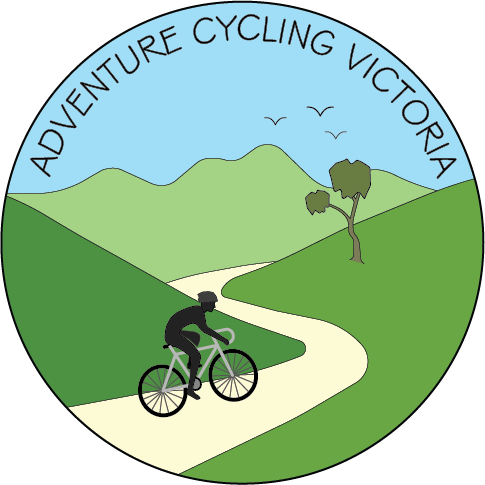


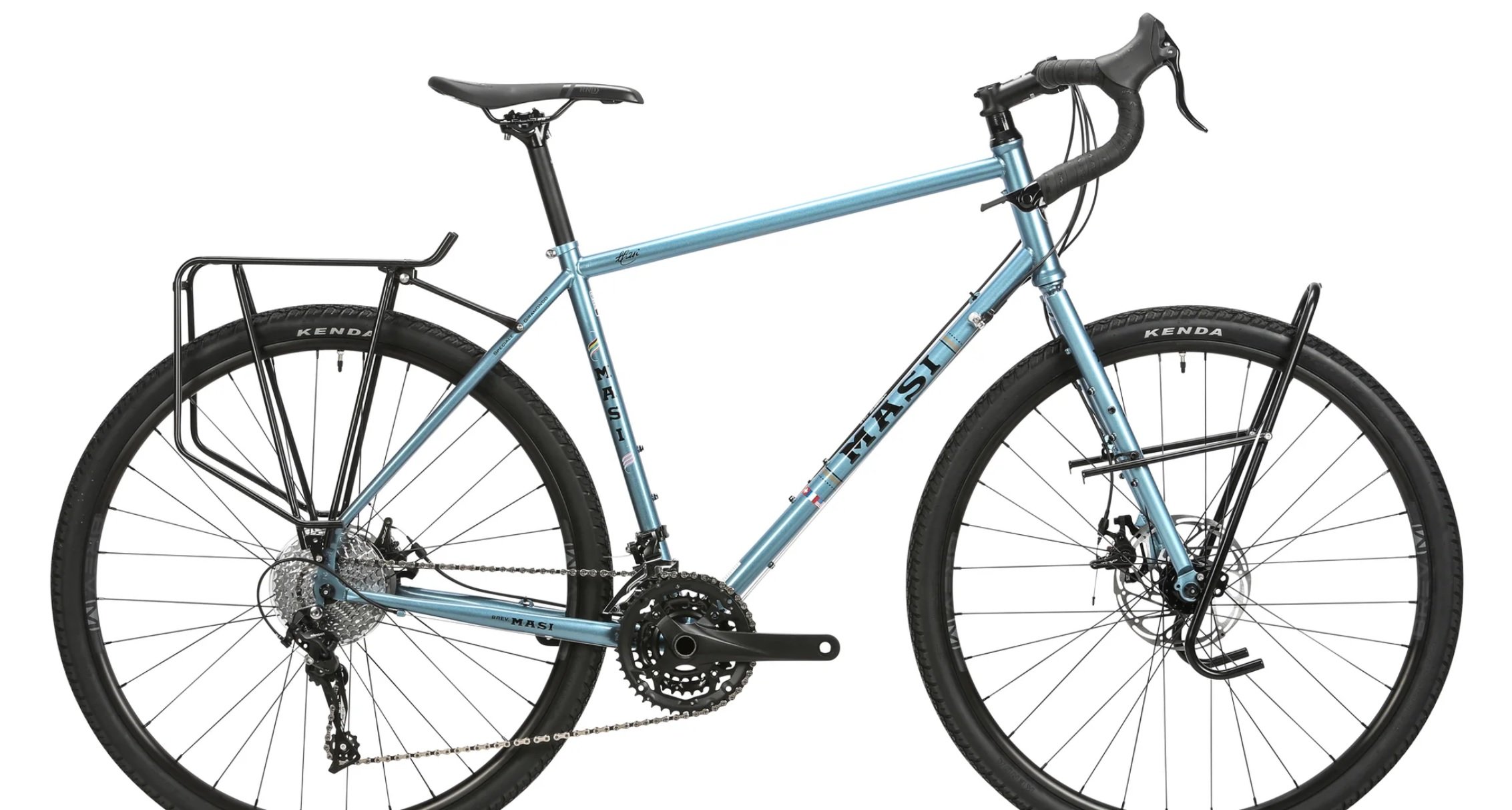
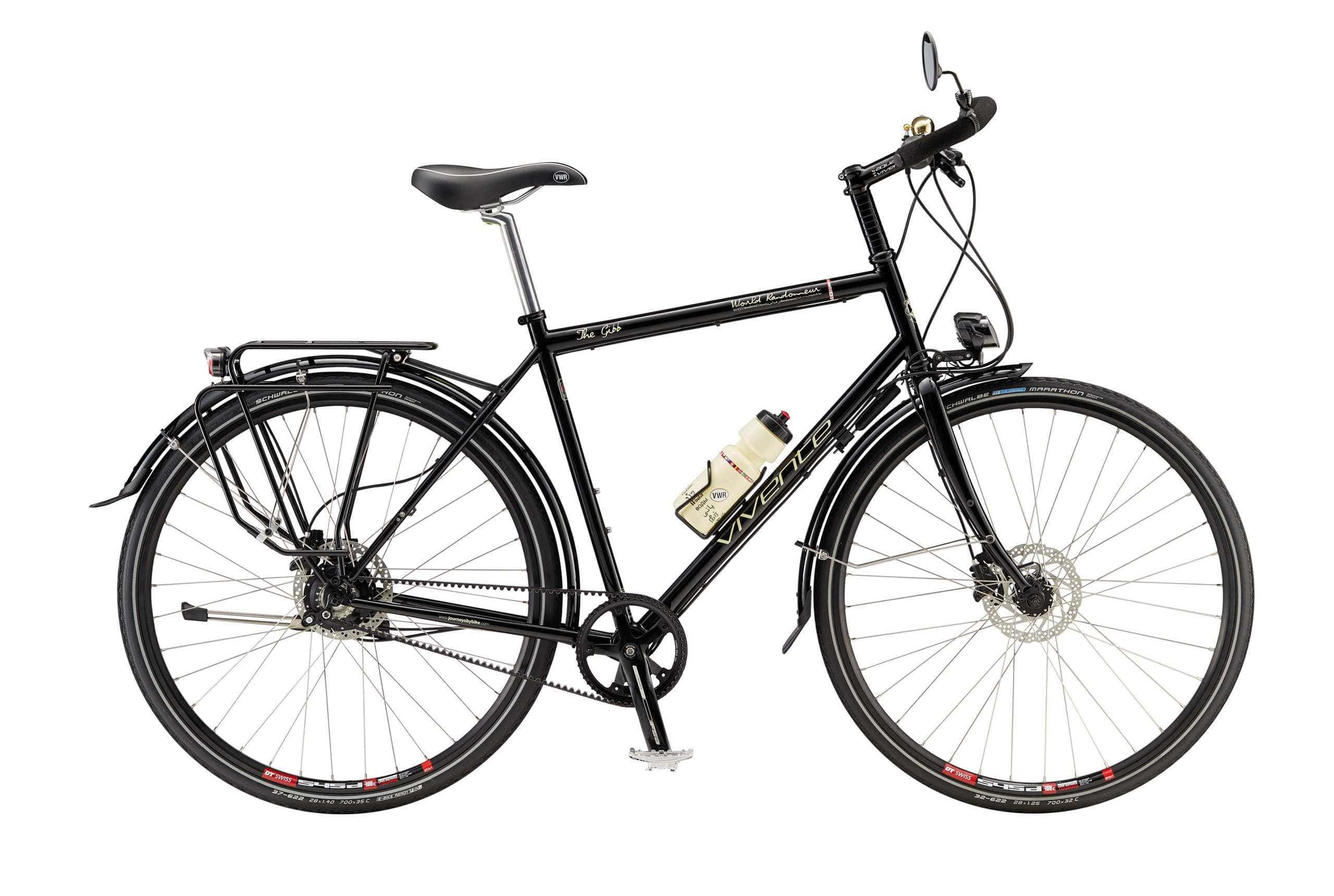



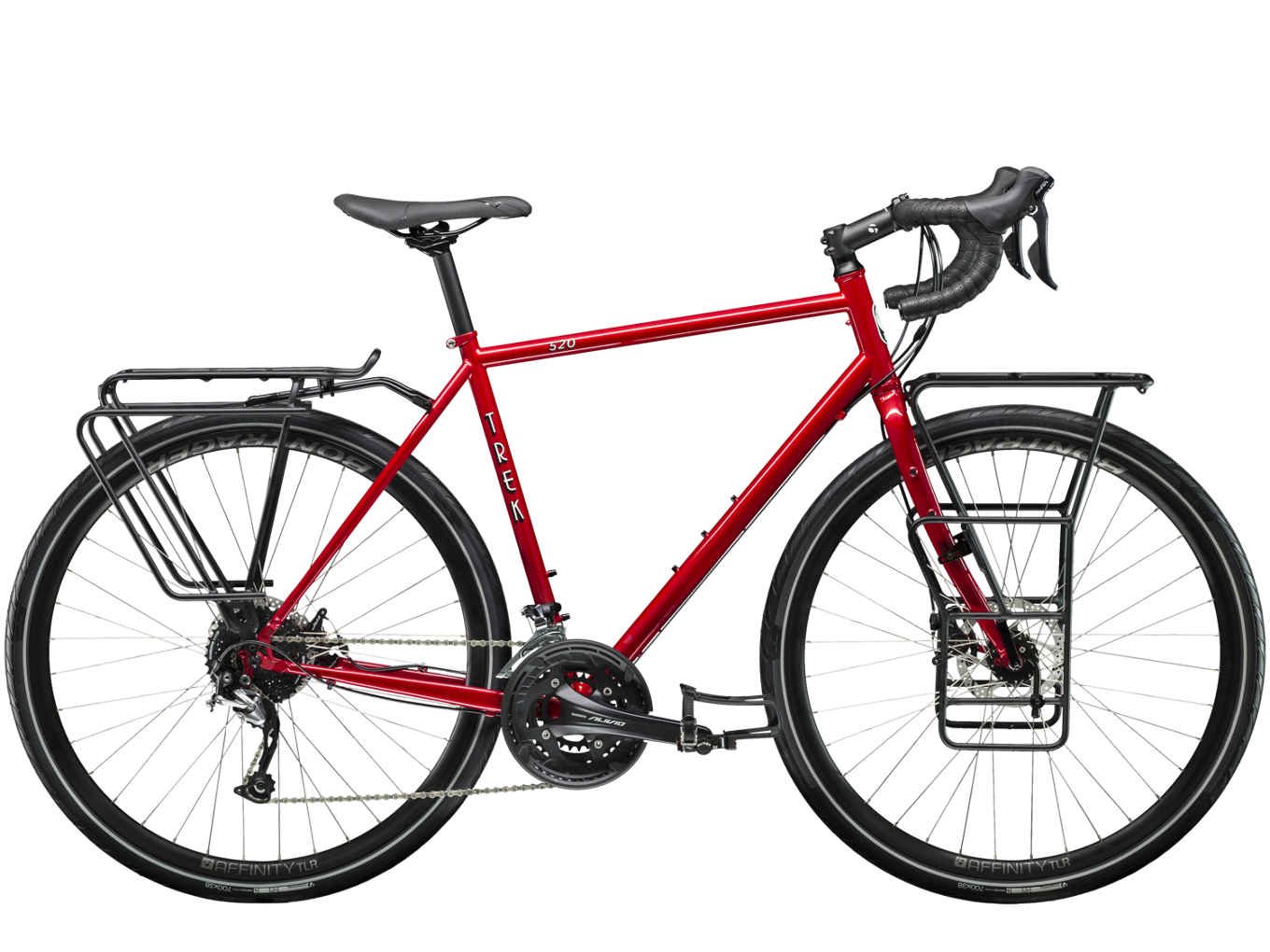


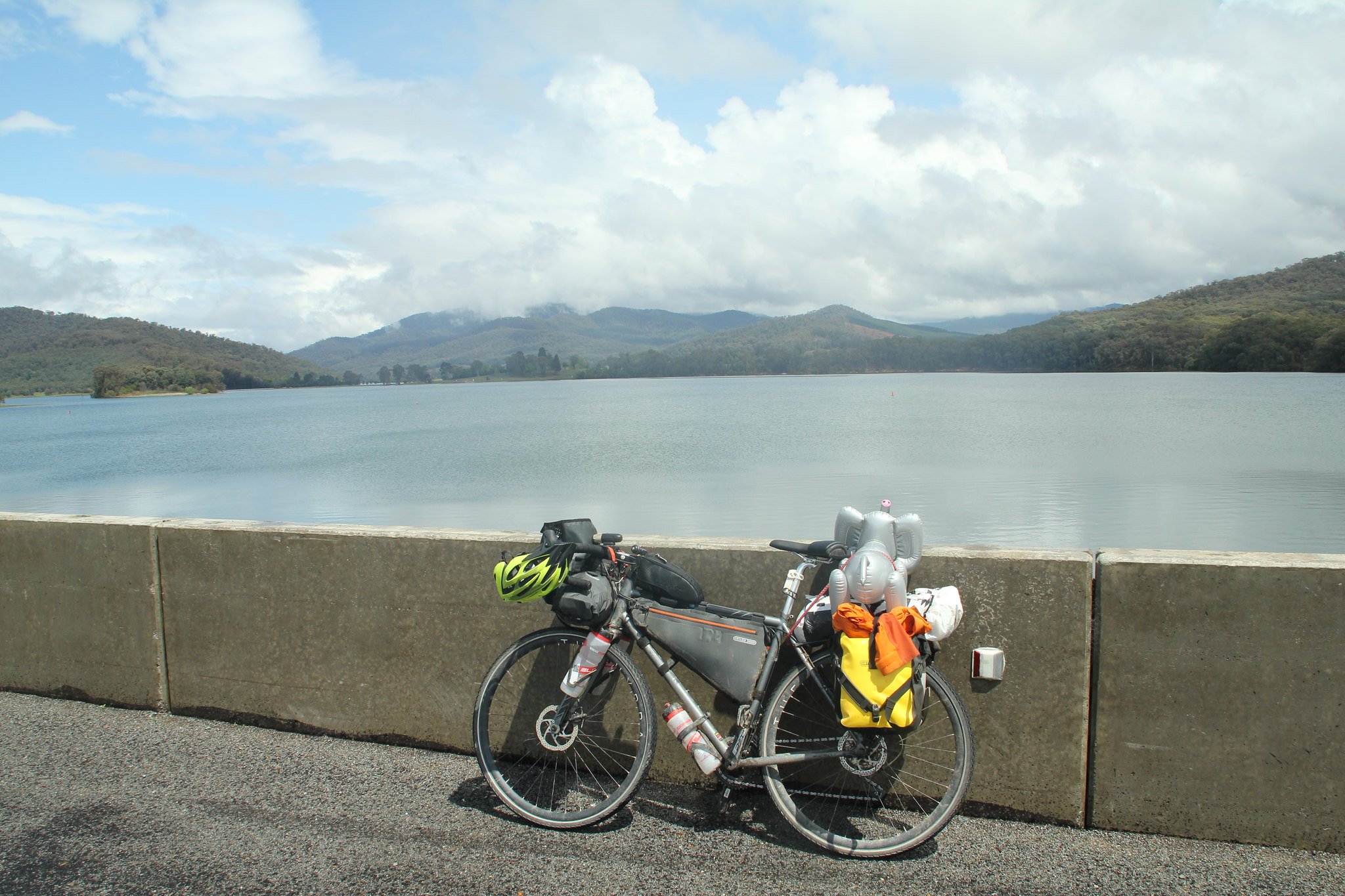




How to get the gears ratios you want on the cheap.